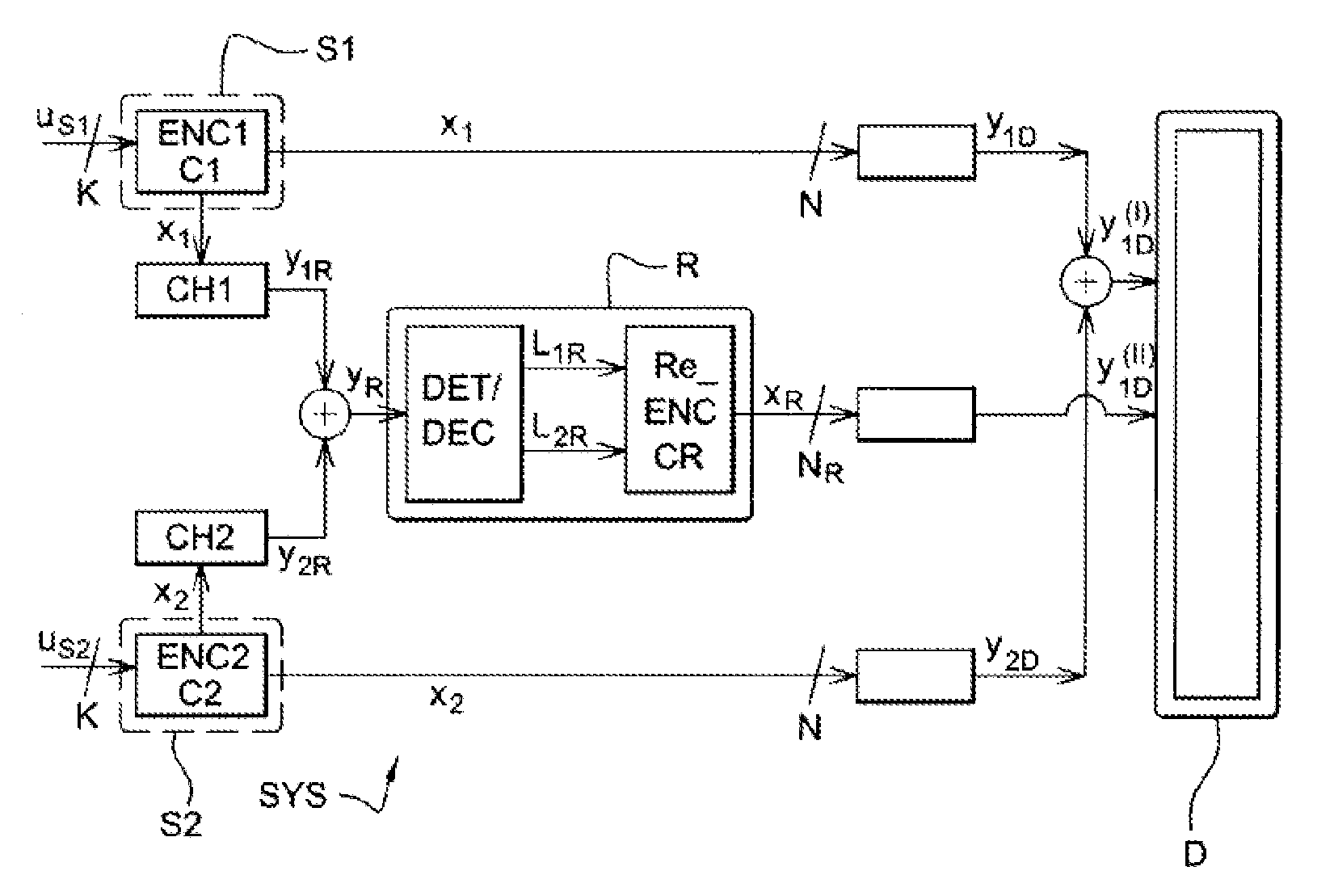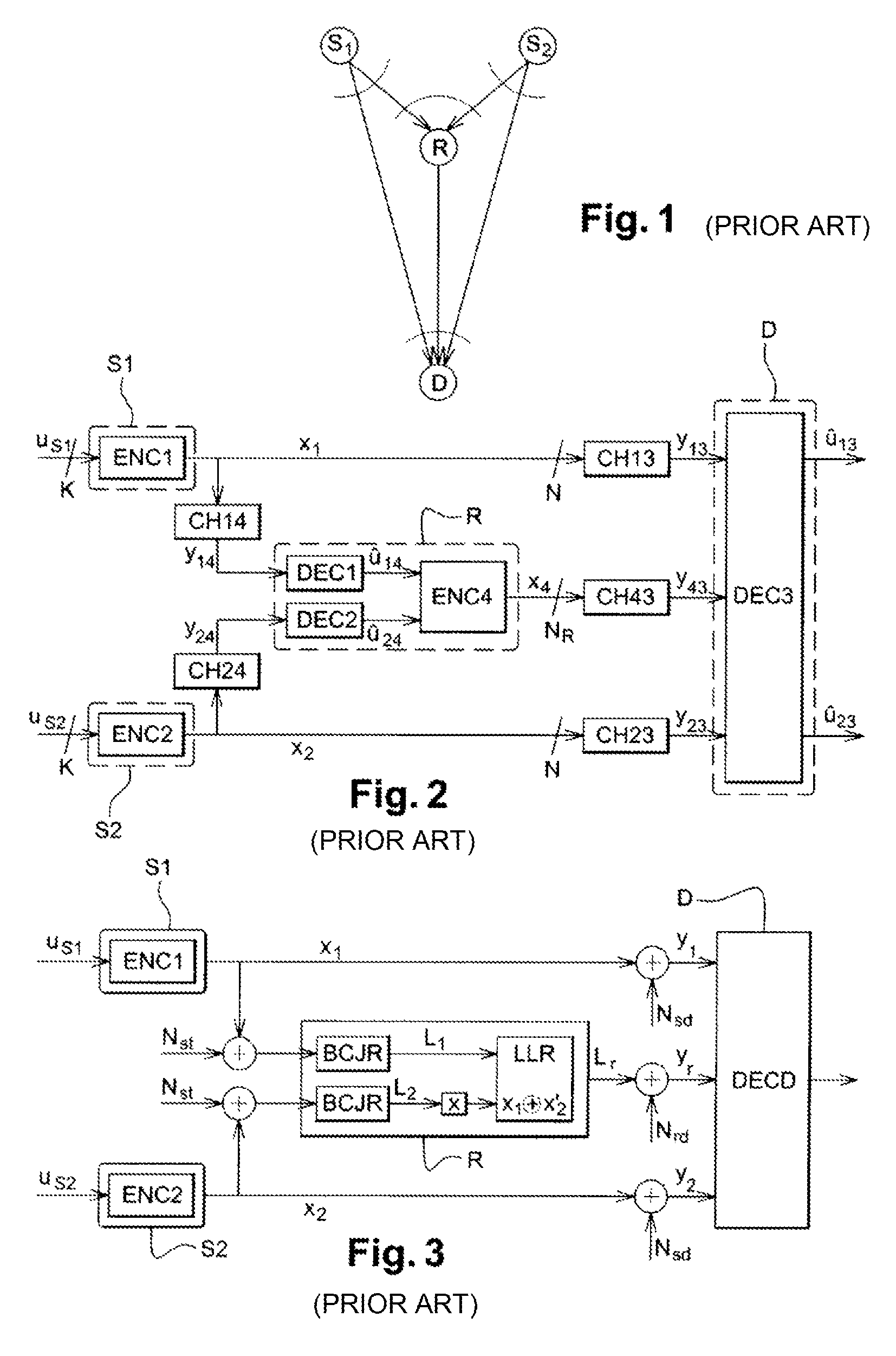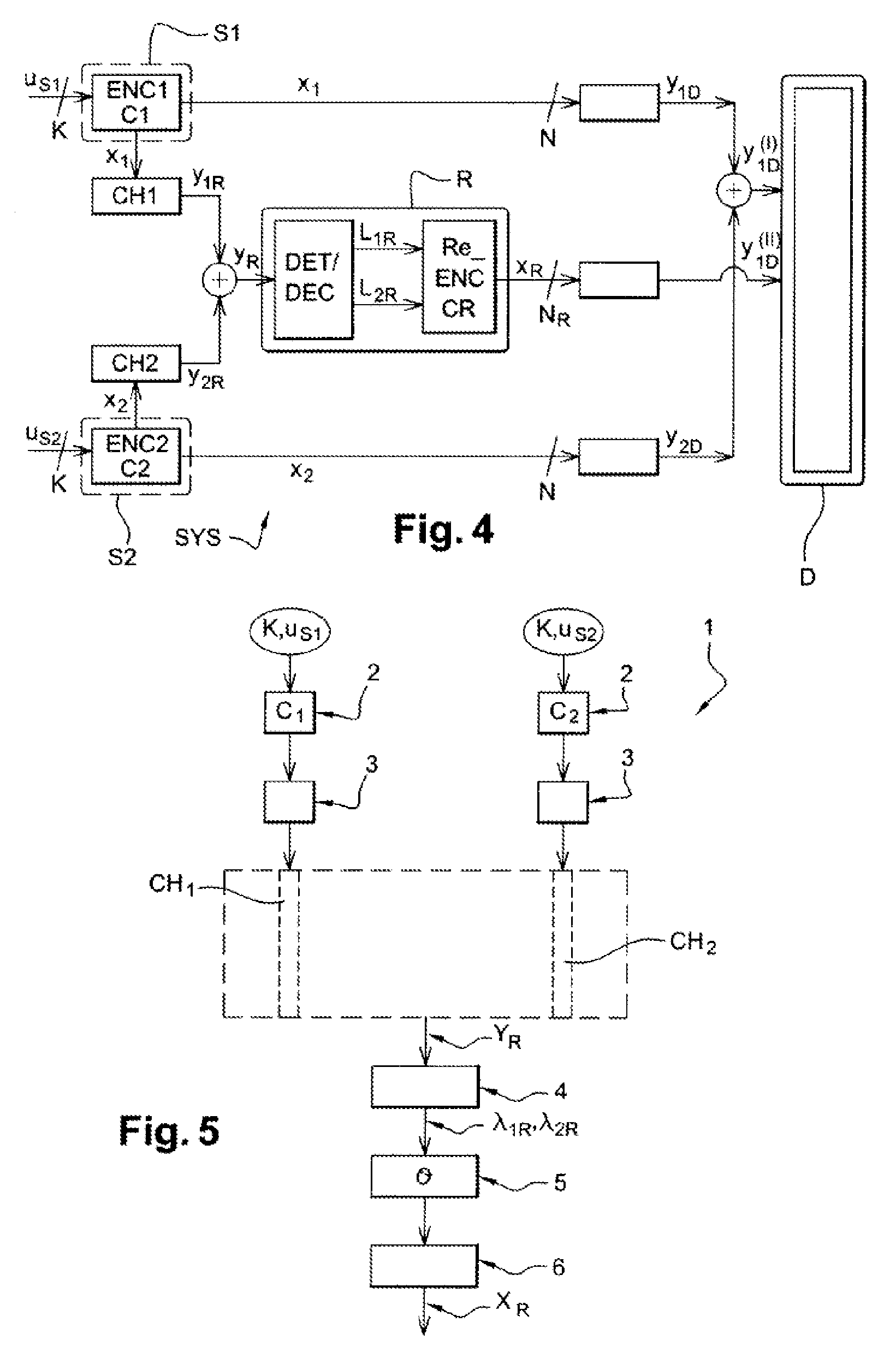Method for transmitting a digital signal for a semi-orthogonal MARC system having half-duplex relay, and corresponding program product and relay device
a semi-orthogonal marc system and relay technology, applied in the direction of transmission monitoring, coding, repeater/relay circuit, etc., can solve the problems of poor transmission reliability, difficult transmission channel of mobile network, and inability to optimize the use of spectral resources
- Summary
- Abstract
- Description
- Claims
- Application Information
AI Technical Summary
Benefits of technology
Problems solved by technology
Method used
Image
Examples
first embodiment
[0106] the MARC system illustrated by FIG. 4 comprises links CH1, CH2 between the sources S1, S2 and the relay R which are assumed to be perfectly reliable, stated otherwise the links are of very good quality and the decoding is almost error-free.
[0107]The relay R, illustrated by FIG. 6, decodes in a hard manner the data of the two sources with the aid of a hard joint detector / decoder DET / DEC_d and it re-encodes them jointly with the aid of a hard joint coder Re_ENC_d on the basis of the modulation and space time coding scheme CR.
[0108]The outputs ûS1, ûS2 of the joint detector / decoder DET / DEC_d take binary values utilized by the joint coder Re_ENC_d:
λ1R=ûS1 ε F2K
λ2R=ûS2 ε F2K
[0109]The hard joint coder Re_ENC_d utilizes as input two vectors of binary values and produces a matrix of discrete symbols SR1 εχRTR×N1 where χR is a complex constellation with cardinality |χR|=2m (m ε) by applying the modulation and space time coding scheme CR:[0110]CR:F2K×F2K→χRTR×N1 which produces the di...
second embodiment
[0113] the semi-orthogonal MARC system illustrated by FIG. 4 comprises links CH1, CH2 between the sources S1, S2 and the relay R with a Rayleigh fading. Furthermore, the sources do not have any knowledge of the link separating a source from the relay. There consequently exists a nonzero probability that the messages of the two sources will be decoded imperfectly by the relay. Under these conditions, there is a risk of the relay propagating errors to the recipient.
[0114]This mode allows the consideration at the level of the recipient during the joint decoding, of the decoding errors occurring at the relay.
[0115]According to this mode, the relay R illustrated by FIGS. 7 and 8, performs a soft joint detection / decoding by means of a soft joint detector / decoder DET / DEC_s so as to obtain the a posteriori probabilities (APP) of the information bits, ({P(uk=0,1)}).
[0116]The APPs of the information bits are calculated in the form of a likelihood ratio (LLR Log-Likelihood-Ratio) defined as:
[0...
PUM
 Login to View More
Login to View More Abstract
Description
Claims
Application Information
 Login to View More
Login to View More - R&D
- Intellectual Property
- Life Sciences
- Materials
- Tech Scout
- Unparalleled Data Quality
- Higher Quality Content
- 60% Fewer Hallucinations
Browse by: Latest US Patents, China's latest patents, Technical Efficacy Thesaurus, Application Domain, Technology Topic, Popular Technical Reports.
© 2025 PatSnap. All rights reserved.Legal|Privacy policy|Modern Slavery Act Transparency Statement|Sitemap|About US| Contact US: help@patsnap.com



